designed for the way women work.
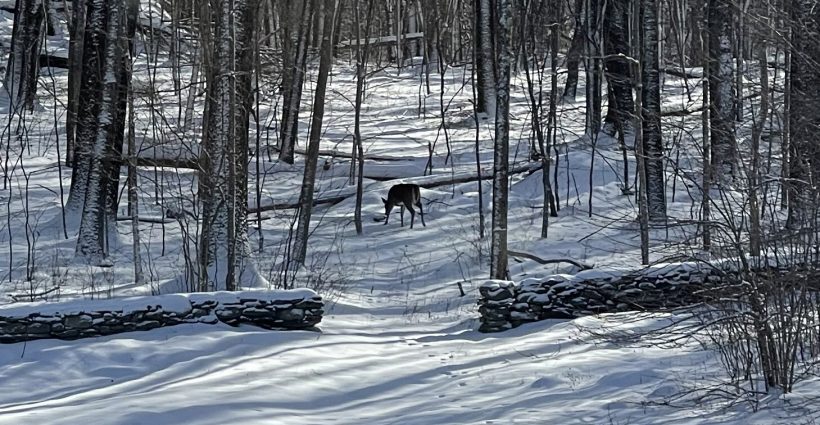
How Do Wild Animals and Livestock in Northern Climates Adapt to Survive Cold Winters?
Category: Presenting "The Curious Gardener"
Most gardeners are animal lovers I’ve observed. So I know I’m not the only one who wonders (and worries a little) about the wildlife living around me when it gets really cold outside. With the ground frozen and most plant life dormant, how do they find food and stay warm in subfreezing weather, like we’re having right now in New York State? What about livestock?
Here are some things I’ve learned:
Hibernation: Some animals hibernate, going into a state of torpor to escape the cold and the need for food. Most hibernators in northern climates are small animals. In smaller animals, the surface area of their bodies is greater in relation to their mass so they expend more energy staying warm and lose body heat faster. They have evolved over time to survive the cold and lack of food by drastically reducing their heart rate and body temperature. This is called going into a state of hibernation.
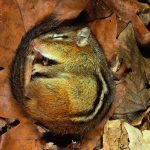
Chipmunks:
Chipmunks can reduce their heartbeat from 350 beats per minute to 4 beats per minute. Using salty body fluids to prevent tissue crystallization, they can also drop their body temperature to below freezing. Their brainwaves actually become flatlined! True hibernators, like chipmunks, still need to wake up every few days to eat and restore their normal bodily functions. Chipmunks store food but will occasionally leave their underground burrow and go out searching for food during the winter.
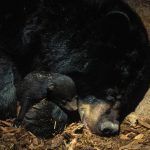
Bears:
Black bears and brown bears of North America go into a different state of hibernation. They are able to easily wake up if threatened by predators or to take care of their young. Pregnant female bears will give birth during this time, then go back to sleep afterwards. If left uninterrupted a bear can sleep more than 100 days without eating, drinking, or passing waste. During torpor or hibernation a bear’s heart rate and breathing rate decrease and body temperature reduces only slightly. To keep warm, bears have short dense hairs close to the skin that trap heat, and they grow a shaggy layer of longer outer hairs during winter.
Deer:
Deer are one of the most cold-adapted species for surviving winter conditions. Studies done in very cold northern climates have found that most of the herd tend to survive winters.
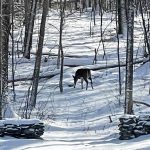
Here are some of the ways deer have learned to adapt to the cold:
- The deer’s winter coat absorbs more sunlight and traps more body heat than the fur they have in summer.
- The pads on their feet harden to become something like an ice pick. The deer use this to cut through the surface of ice and snow, keeping them steady on their feet.
- Deer have an excellent sense of smell, which helps them find food under the snow. They use their antlers and hooves to excavate their food through the snow and ice.
- In winter, deer decrease their activity because there is not enough food available to sustain them. They stop running and traveling long distances when winter approaches.
- They are capable of lowering their heart rate and body temperature, reducing energy expenditure.
- Deer seek shelter when the weather is very threatening. Coniferous stands make an ideal refuge. These stands can be made up of firs, spruces, pines, and larches, with low shrubs beneath.
- Deer are capable of sitting for long periods of time during a particularly severe storm without moving for days. At this time, they do not even eat. They depend on the reserves of fat that they created during the fall.
- Deer are herd animals. The unity in the pack helps them to survive the deep winters by staying close and protecting their weaker members.
Foxes:
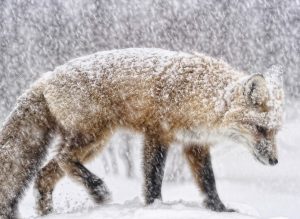
Red foxes do not change their routine much during colder seasons. Due to their thick, fluffy coats, foxes are able to survive, hunt, forage and explore during the winter months with no problems. Foxes may even begin mating and raising offspring in the winter, as they tend to breed from January to March.
Racoons:
Raccoons look for warm places to make dens in the winter. They choose places such as hollow trees, underground burrows abandoned by other animals, caves, and buildings. They sometimes share dens with other raccoons to take advantage of body heat.
Raccoons may enter a state of torpor in colder climates. They can sleep in a curled position for weeks, which reduces the amount of energy they need to survive. Their body temperature is lowered, and insulin production increases, which reduces blood sugar. On warm days, raccoons wake up and leave their dens to look for food. Torpor gives raccoons many of the benefits of hibernation but still allows them to be on the lookout for predators and food.
Squirrels:
Gray squirrels do not hibernate but instead rely on their fat reserves and cached stores to survive long, cold winters. Gray squirrels can be seen out in the winter months as long as the temperatures are not too cold (not below 30 degrees F) and as long as it is not raining or snowing.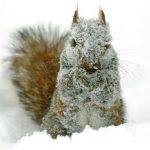
Domestic livestock:
As the days get shorter, horses and cattle grow long, coarse hair all over their bodies. The long hair traps warm air against their bodies and the animals have the ability to fluff up these long hairs when they are cold. Horses and cattle need shelter from the wind and wet snow. When their hair gets wet, it is harder for the hair to trap warm air around them. Fresh straw on the ground helps to keep them warm too.
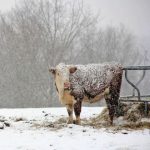
The work of eating can keep domestic livestock warm too. When animals like horses and cattle eat oats and hay, their stomachs give off heat as they digest the food.
A sheep’s wool allows them to survive the harsh conditions of winter. The matted wool strands in a sheep’s coat are very strong and thick, and they can soak in lots of water before it reaches their skin. This helps to keep them warm even when it’s raining or snowing.
Chickens prefer a warmer climate, but are more cold hardy than we may think. Some species can tolerate temperatures below freezing and stay warm by huddling together. During cold winter weather some precautions are needed to ensure chickens are comfortable despite the low temperatures. Fresh hay in their coop is one of the best ways to help them keep warm.
Humans:
Humans are not well adapted to the cold. Scientists study animals to learn how humans could become more cold-adapted. Watch this animated video for more information.
Please share some observations you’ve made about the wildlife and livestock (and even your own pets) around you in winter.



I was astonished to learn that woolly bear caterpillars freeze solid and then thaw out in the spring to continue doing woolly bear caterpillar sorts of things. Mother Nature never ceases to amaze.
I, like so many others, worried about the beautiful animals here in Pennsylvania. Thank you for this information.
This article was amazing. Very informative and gave me a much better understanding of how winter survival is for different animals.
Thank you.
Fascinating. That Mother Nature is very resourceful!
When the snow is fairly deep, I have seen red squirrels tunnel through it from the woods to beneath bird feeders.
I’ve often wondered what happens to our garden rabbits in winter. Do they hibernate?
Loved your Article Dorian, very informative. I always worry about animals in conditions as we are experiencing now, especially horses!
I am in the south, but we are having temps as low as zero this past week. I have worried about our crazy squirrels in the yard! Thank you for this article. I feel better about them!
I have dairy goat chickens to shape Shetlands and three great Pyrenees and a border collie Aussie. The goats hang out in the barn when it’s raining or snowing the peers hang out in the pasture when it’s raining or snowing the chickens just hang out because their chickens sometimes are in sometimes they’re out they have an ample coop to go into, but they also have an ample outside area to hang out in, we’re in the central California, Sierra Nevada’s and yes we get snow and yes we get cold and yes we get freeze and yes we get rain and nobody’s died yet. Even the cats do great they just kind of fend for themselves Eden when they don’t wanna go outside for the day, they don’t go , it is fascinating to watch nature 24 seven through all the seasons